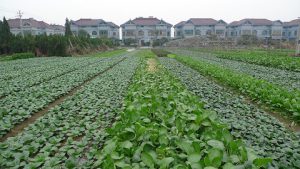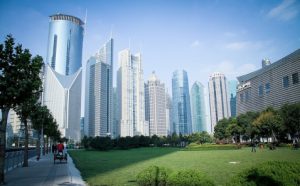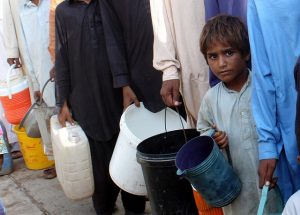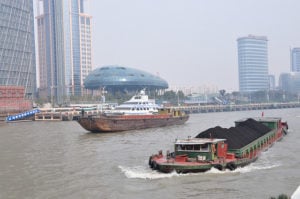This is the second of a special three-part series.
Part one: Ecological civilisation – vision for a greener China
Part three: Standards, mechanisms and assessment procedures
As China struggles to overcome the environmental legacy of its rapid growth and industrialisation, a new central government document on “ecological civilisation” fleshes out for the first time the policies and approach the government now proposes.
The first five parts of “Opinions of the Central Committee of the Communist Party of China and the State Council on Further Promoting the Development of Ecological Civilization” concern targets, principles and plans for various sectors in Chinese economy and society, including regional development and urbanisation, innovation policy, resources use and ecosystems conservation.
The first section, “overall requirements,” sets a number of basic principles of “green development, circular development and low-carbon development”, stressing “the leading role” of science and technology innovation, and promising continued support and investment for cleaner modes of production, electricity generation, heating, transport and food.
While these and other 2020 targets have appeared in other government announcements, integrating them into such a high-level document could be aimed at creating a unified strategy to overcome the rivalry and bargaining between different ministries that has weakened environmental regulation in the past.
·Cutting carbon intensity (CO2 emissions per unit of GDP) by 40% to 45% on a 2005 baseline;
·The proportion of non-fossil primary energy consumption rising to around 15%;
·Keeping total water consumption to less than 670 billion cubic metres, with related targets on water efficiency for industrial and agricultural uses;
·Raising forest coverage to above 23%;
·Raising vegetation coverage on grasslands to 56%; and,
·Preserving at least 800 million mu (around 533,300 square kilometres) of wetland.
Part two concerns environmental aspects of China’s regional plans and development approaches in coastal, marine, wetland and other ecologically significant zones.
It includes “scientific development of marine resources” as a means to protect fisheries and the health of the seas. It also emphasises protection of a “beautiful” countryside free of pollution and the improvement and reconstruction of dilapidated rural infrastructure, through tourism and the construction of “model villages”. Further down, the text commits China to “transform the agricultural growth model” by promoting a “circular economy” – in which resources are reused and recycled, rather than simply being extracted, manufactured and consigned to waste.
And in promising higher safety for agricultural products, the document suggests this decline in physical structures, livelihoods and environmental quality of the Chinese countryside is closely related to rising health and food safety concerns, including among urban consumers.
The most critical issue in this section is arguably urbanisation. Currently, 54% of China’s population lives in cities; this is expected to rise to 70% by 2030. China’s urbanisation drive presents enormous opportunities for decarbonisation through smart planning, electric vehicles, integrated renewable energy and public transport systems.
But if this ambition is not well planned, it also risks locking in high-carbon growth for decades. China’s “new-style” urbanisation plan to 2020 is mentioned in the Party document – which endorses these sustainability-oriented principles – as is the need to “vigorously promote urbanization”, while defining a “scientific and reasonable macro urbanization layout”.
In other words: to curb urban sprawl in megacities in favour of environmentally sustainable development in China’s small and medium-sized cities.
The third part of the text addresses “technological innovation and structural adjustment”. In other words: how to continue economic growth while improving its quality and move up the “value chain” away from heavy industries. The 12th Five-Year Plan (FYP), from 2011 to 2015, emphasised the development of low-carbon innovation systems and promoted “strategic emerging industries”, such as electric vehicles, through fiscal and other incentives. This document points to continued support, for example in the form of sustained government-funded R&D on renewable energy in the 13th FYP.
It also warns of the need to avoid overcapacity, a problem in emerging industries such as solar photovoltaics, and to prevent the “transfer of outdated production facilities to central and western regions”, as higher-value-added manufacturing dominates industry on the eastern seaboard. It advocates giving “full play to the decisive role of the market in determining the orientation of green industries and choosing technology routes”, rather than specifying specific technology goals for state-supported innovation.
Some environmentalists may also be encouraged that this section lists “organic agriculture” and “ecological agriculture” as examples of innovation that require government support, but nowhere in the text does it mention agricultural biotechnology (such as transgenic crops), which was among the strategic emerging industries in the 12th FYP.
Section four addresses what is described as the “bottleneck restraint of resources”, through recycling and efficient resource utilisation and the development of a “circular economy”. This includes a big focus on energy saving and “low-carbon campaigns in energy-intensive organizations”. It also says China should “strictly implement standards for energy-efficient buildings”, and promotes the “application of renewable energy in buildings in standards, design and construction” – an important move if technologies like solar PV are to be utilised effectively, since initial financial outlays and rental contracts often make it difficult for individuals to install renewables at home.
It also cites the need to “speed up the establishment of circular systems for industry, agriculture and the service sector” and mentions “urban mining” – the reuse of waste materials from kitchens, buildings and products. It also talks of curbing “unreasonable water demand”, while expanding the use of “unconventional water resources such as reclaimed water” and, presumably desalinated, seawater.
The fifth part of the document concerns the traditional cornerstone of environmental protection efforts: conservation of the “natural ecosystem”, so that “people can breathe fresh air, drink clean water and work and live in a healthy environment”. This section includes a particular focus on preserving the fragile “ecological zones” of the Tibetan plateau, the Loess plateau, major rivers and “areas where development is forbidden”.
This echoes previous government announcements on new “ecological red lines” for China, which would restrict development in fragile environments. It affirms support for ecological restoration and afforestation projects and mentions the strict implementation of “grazing prohibition” and other controversial grasslands-protection policies, which have been unpopular with nomadic populations. It also cites the need for biodiversity protection and mentions China’s new system of national parks.
The pollution prevention and control measures in this section include the “Action Plan for Air Pollution Prevention and Control” – a strict set of new regulations introduced in response to choking smog in urban areas in recent years, alongside similar plans for the prevention of water and soil pollution, the health of effects of which can be just as grave. Equally critical are the need for “prevention, control and emergency management” of risks from “chemicals, persistent organic pollutants and hazardous wastes”, and ensuring nuclear safety – an increasing concern in coastal cities where nuclear power plants are being proposed. This section also includes the negative ecological impacts of climate change and mentions the need for systems to cope with the impacts of “extreme weather” related to global warming.
In conclusion, this key Party document – despite its inconspicuous title and dense wording – brings together in its first five parts many of the environmental commitments that Party and government plans and pledges have outlined in recent months and years, with admirable ambition and strong high-level signals of a commitment to a shift in China’s growth model.
In the past, implementation and enforcement of similar commitments has often failed, particularly at the local level. The next four sections of the “Opinions” signal a highly significant effort to reform governance for “ecological civilisation” in China, with new standards and systems.
This is the second article in a three-part series, please read the first installment here and third installment here.








